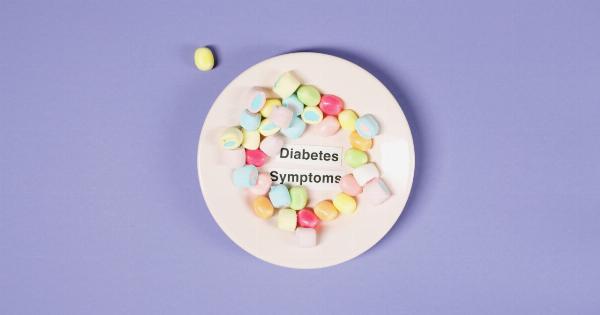Atherosclerosis, also known as hardening of the arteries, is a cardiovascular disease characterized by the deposition of plaque on the inner walls of arteries.
This condition gradually narrows and hardens the arteries, leading to restricted blood flow and potential complications such as heart attacks or strokes. Understanding the causes of atherosclerosis is crucial in order to identify those who are most vulnerable to this disease and implement preventive measures.
In this article, we will delve into the various factors that contribute to the development of atherosclerosis, as well as explore the populations that are at a higher risk.
Causes of Atherosclerosis
The development of atherosclerosis involves a complex interplay of various factors. Let’s discuss some of the primary causes:.
1. High Blood Pressure
Hypertension, or high blood pressure, is a major contributor to the development of atherosclerosis. The constant pressure on the artery walls can damage the inner lining, making it more susceptible to the formation of arterial plaque.
Over time, the plaque buildup narrows the arteries and restricts blood flow.
2. High Cholesterol Levels
Elevated levels of LDL (low-density lipoprotein) cholesterol, often referred to as “bad” cholesterol, and triglycerides in the bloodstream are strongly associated with atherosclerosis.
Excess LDL cholesterol is deposited in the arterial walls, triggering an inflammatory response and the formation of plaque.
3. Smoking
Smoking tobacco products significantly increases the risk of developing atherosclerosis. The chemicals present in cigarettes not only damage the lining of the arteries but also promote the accumulation of plaque.
Additionally, smoking reduces the levels of good cholesterol (HDL) in the bloodstream, further exacerbating the progression of atherosclerosis.
4. Diabetes
Individuals with diabetes have a higher risk of developing atherosclerosis. Poorly controlled blood sugar levels can damage the blood vessels’ inner lining, enhancing plaque formation.
Furthermore, diabetes often coincides with other risk factors such as high blood pressure and abnormal cholesterol levels, leading to a greater susceptibility to atherosclerosis.
5. Obesity
Obesity and excess body fat can contribute to atherosclerosis by increasing the levels of LDL cholesterol and triglycerides in the bloodstream.
Moreover, obesity is often associated with other risk factors, including high blood pressure and diabetes, further raising the risk of developing atherosclerosis.
6. Sedentary Lifestyle
A lack of physical activity and a sedentary lifestyle can accelerate the progression of atherosclerosis.
Regular exercise helps maintain healthy blood pressure levels, promotes the balance of cholesterol levels, and improves overall cardiovascular health. In contrast, a sedentary lifestyle promotes weight gain and other risk factors associated with atherosclerosis.
7. Age and Gender
As individuals age, the risk of developing atherosclerosis increases. The arteries naturally lose some of their elasticity and become more prone to plaque formation.
Additionally, men tend to develop atherosclerosis at an earlier age compared to women, though women’s risk catches up after menopause.
8. Family History
A family history of atherosclerosis and cardiovascular disease can significantly increase an individual’s vulnerability to the condition.
Genetic factors can influence cholesterol metabolism, blood pressure regulation, and overall cardiovascular health, making certain individuals more predisposed to atherosclerosis.
9. Chronic Inflammation
Chronic inflammation within the body, often associated with conditions like rheumatoid arthritis or lupus, can contribute to the development of atherosclerosis.
Inflammatory cells interact with LDL cholesterol in the arterial walls, leading to the formation of plaque.
10. Environmental Factors
Certain environmental factors, such as exposure to air pollution or exposure to secondhand smoke, have been linked to the development of atherosclerosis.
These factors can exacerbate inflammation, impair vascular function, and contribute to the progression of the disease.
Vulnerable Populations
Although anyone can develop atherosclerosis, certain populations are more vulnerable due to a combination of genetic, lifestyle, and sociodemographic factors. Let’s explore some of these vulnerable groups:.
1. Older Adults
As mentioned earlier, the risk of developing atherosclerosis increases with age. Older adults are more likely to have other risk factors such as hypertension, diabetes, and obesity, further amplifying the likelihood of atherosclerosis development.
2. Individuals with Family History
Those with a family history of atherosclerosis or cardiovascular disease have an increased susceptibility to the condition.
Genetic factors inherited from parents influence cholesterol metabolism and blood vessel health, making these individuals more prone to developing atherosclerosis.
3. Individuals with Diabetes
Diabetes significantly raises the risk of atherosclerosis due to the damage caused by prolonged elevated blood sugar levels.
People with diabetes are more likely to have other associated risk factors, such as hypertension and high cholesterol levels, further enhancing their vulnerability to atherosclerosis.
4. Smokers
Individuals who smoke or are exposed to secondhand smoke are at a heightened risk of developing atherosclerosis. Smoking damages the arterial walls and accelerates the formation of plaque, leading to atherosclerosis and related complications.
5. Obese Individuals
Obesity is strongly associated with atherosclerosis. Excess body fat promotes the accumulation of LDL cholesterol and triglycerides in the bloodstream, leading to plaque formation.
Obesity is often accompanied by other risk factors, such as hypertension and diabetes, further increasing the vulnerability to atherosclerosis.
6. Individuals with Hypertension
High blood pressure places significant stress on the arterial walls, making them more susceptible to damage and plaque formation.
Individuals with hypertension are at an increased risk of atherosclerosis, which can lead to cardiovascular complications if left unmanaged.
7. Individuals with Abnormal Cholesterol Levels
Elevated levels of LDL cholesterol and triglycerides significantly contribute to the progression of atherosclerosis.
Those with abnormal cholesterol levels, especially high LDL cholesterol, are more vulnerable to plaque formation and the subsequent complications of atherosclerosis.
Prevention and Control
While certain risk factors for atherosclerosis cannot be modified, such as age or family history, several preventive measures can significantly reduce the risk of developing this cardiovascular disease:.
1. Healthy Diet
Adopting a balanced and nutritious diet is crucial for maintaining cardiovascular health.
Incorporate plenty of fruits, vegetables, whole grains, lean protein sources, and healthy fats into your diet while limiting the consumption of saturated and trans fats, as well as added sugars and salt. This promotes a healthy weight, optimal cholesterol levels, and overall heart health.
2. Regular Exercise
Engaging in regular physical activity, such as brisk walking, jogging, swimming, or cycling, is essential in preventing atherosclerosis. Aim for at least 150 minutes of moderate-intensity exercise or 75 minutes of vigorous exercise each week.
Regular exercise helps manage weight, lowers blood pressure, improves cholesterol levels, and enhances overall cardiovascular fitness.
3. Smoking Cessation
If you are a smoker, quitting smoking is one of the most impactful steps you can take to reduce your risk of atherosclerosis and related complications.
Seek professional help, explore smoking cessation programs, and surround yourself with a supportive network to successfully quit smoking.
4. Manage Blood Pressure
Regular monitoring and management of blood pressure are crucial for preventing the progression of atherosclerosis.
Maintain a healthy lifestyle, limit sodium intake, engage in regular exercise, and follow prescribed medications to keep blood pressure within a healthy range.
5. Control Cholesterol Levels
Work closely with your healthcare provider to manage cholesterol levels effectively.
This may involve adopting dietary modifications, increasing physical activity, and, in some cases, taking cholesterol-lowering medications, such as statins, if prescribed.
6. Manage Diabetes
If you have been diagnosed with diabetes, it is essential to manage blood sugar levels effectively.
Consistently monitor glucose levels, follow a diabetes-friendly diet, engage in regular exercise, and take prescribed medications or insulin as directed by your healthcare provider.
7. Maintain a Healthy Weight
Strive to achieve and maintain a healthy weight by adopting a balanced diet and engaging in regular physical activity.
Losing excess weight reduces the strain on the cardiovascular system, lowers blood pressure, improves cholesterol levels, and decreases the risk of atherosclerosis.
Conclusion
Atherosclerosis is a complex cardiovascular disease with multiple causes and risk factors. Understanding the contributing factors and vulnerable populations is essential for prevention, early detection, and effective management of this condition.
By adopting a healthy lifestyle, making appropriate dietary choices, engaging in regular exercise, and seeking professional medical advice, individuals can mitigate their risk and maintain a healthy heart.





























